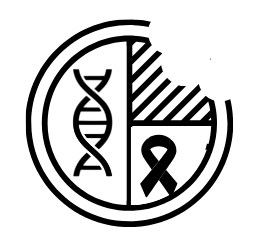Reading time: 4 minutes
Garima Khanna
Marijuana, a popular plant cultivated throughout the globe has caught the eye of scientists to unravel the mysteries of it’s medicinal properties. The dried buds and leaves derived from Cannabis sativa and Cannabis indica have shown potential to cater pain management. While the active cannabinoid properties in marijuana have already been established, the United States Drug Enforcement Administration (USDEA) has categorized marijuana as a Schedule I controlled substance, making it illegal at the federal level to provide a prescription for or otherwise sell or distribute marijuana. Further, the United States Food and Drug Association (USFDA) has not approved its widespread medicinal use. In fact, as a Schedule I substance, it is illegal to even study marijuana scientifically under most circumstances. However, each state has the authority to make decisions about its legality within its borders, and some states have made it legal for use in treating various medical disorders. One such use that has managed to make it into the lab is that of pain treatment, namely in lieu of opioids for cancer patients. Thus, ease of the availability of cannabis to scientific researchers for evaluation also poses a problem. At the same time, there is a dire need for additional adequate research to further the development of cannabis based therapeutics.
Neuropathic pain arises from a malfunction or disorder in the nervous system leading to increased sensitivity to pain. Such pain frequently manifests in cancer patients following chemotherapy or even due to primary or metastatic tumors.Neuropathic pain differs from typical pain since it involves a direct malfunction of the nervous system while on the other hand, in typical pain the nervous system is intact and the body is capable of reacting to a stimulus from the external environment. Overall, neuropathic pain is the most challenging symptom to treat clinically in cancer patients. The reason being the poor understanding and lack of availability of effective treatments which prevent physical, cognitive and social functioning (Edwards et al., 2019). Currently, there are various studies being conducted to examine the effect of cannabinoids in treatment of neuropathic pain caused by chemotherapy , and majority are reaching completion between 2020 and 2022. These may suggest the beneficial use of cannabinoids in patients. Overall, benefits of cannabis administration for cancer patients to provide relief from pain is promising however, none have definitely described a distinct pathway or mechanism as to why this may be the case (Mücke et al., 2018).
Current cancer treatment options rely mostly on opioids for chronic neuropathic pain. This is problematic because opioid treatment has demonstrably high potential for dependency, addiction, and overdose. Use of opioids in pain management therapies pose a wide array of side effects, including severe constipation, which may prevent absorption of the provided pain relieving drugs. As a result, the patient would be less likely to obtain pain relief leading him to take multiple doses, thus initiating an exponential cycle of increasing opioid dosing (Blake et al., 2017).
Let us consider how exactly these cannabinoids work. The body has its own innate mechanisms to survive pain. Cannabis compounds interact with an innate signalling system named as the endocannabinoid system, which controls pain signalling, immune activation, and inflammation.Interestingly, endocannabinoids also known as endogenous cannabinoids are chemical substances released by the body and have an action similar to that of cannabinoids. Activation of the endocannabinoid system induces tissue healing and works to reduce neuropathic pain. Excessive concentrations of glutamate, a chemical messenger for neurons, promotes/drives/initiates neuropathic pain and may even lead to cell death. Both, endogenous cannabinoids and externally administered plant-based cannabinoids inhibit glutamate, thus alleviating neuropathic pain and cell death (Byars et al., 2019). Evidently, cannabinoids obtained from plant sources mimic the actions of inherently present chemicals in the body. Their mechanisms of action are quite similar to those already established by endocannabinoids.
Because of the lack of controlled and moderate options for pain treatment, especially for cancer patients, it is imperative to explore alternative pain relievers for cancer patients, and improving their quality of life long-term and mitigating risk of addiction.Due to the relative benefits of cannabinoids over opioids, they appear to be very promising candidates in mitigating neuropathic pain. Additionally, scientists have evaluated that their actions in the body are driven by the endocannabinoid system. However, presently there is a dire need to enhance its availability to scientists for producing scientifically relevant outcomes by clinical and in vivo studies.
Edited by Keighley Reisenauer
Works Discussed:
The American Cancer Society medical and editorial content team, 2017, March, https://www.cancer.org/treatment/treatments-and-side-effects/complementary-and-alternative-medicine/marijuana-and-cancer.html
Edwards, H., Mulvey, M., & Bennett, M. (2019). Cancer-Related Neuropathic Pain. Cancers, 11(3), 373. doi: 10.3390/cancers11030373
Blake A, Wan BA, Malek L, DeAngelis C, Diaz P, Lao N, Chow E, and O’Hearn S (2017) A selective review of medical cannabis in cancer pain management. Ann Palliat Med 6:S215–S222, AME Publishing Company.
Byars T, Theisen E, and Bolton DL (2019) Using Cannabis to Treat Cancer-Related Pain, W.B. Saunders.
Mücke M, Phillips T, Radbruch L, Petzke F, and Häuser W (2018) Cannabis-based medicines for chronic neuropathic pain in adults, John Wiley and Sons Ltd.
Image Credits:


Leave a comment